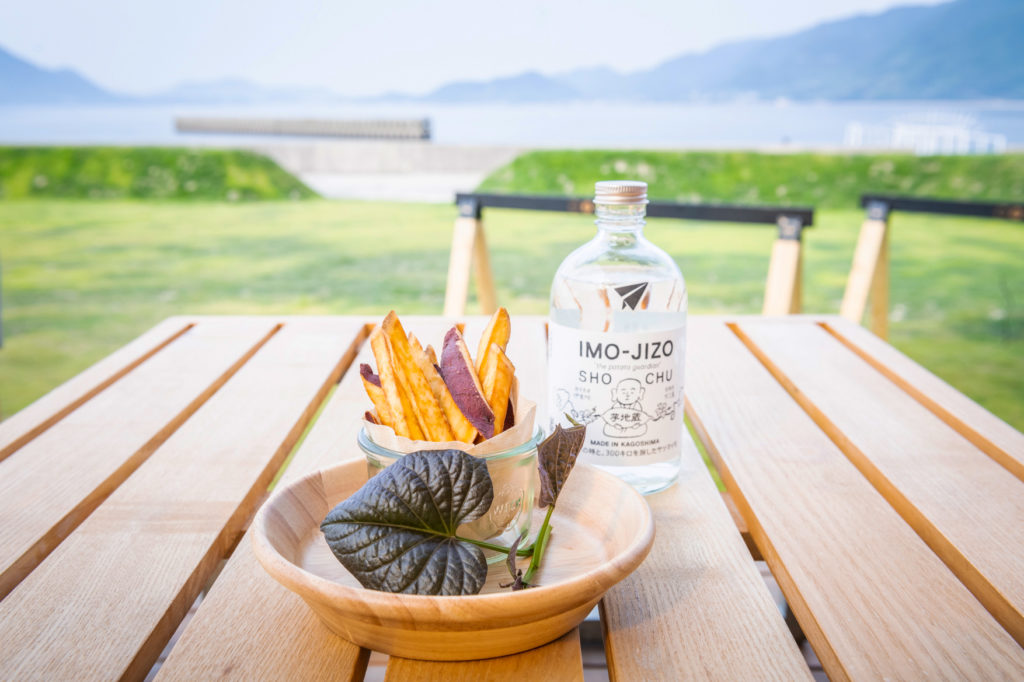To the island-hopping Mecca for cyclists
In the premodern Edo period, a Buddhist priest introduced the Satsuma (Kagoshima) Domain’s specialty satsuma-imo (sweet potato) to the islands of the Seto Inland Sea and saved the residents from the Kyoho famine of the early 1730s. The priest was Asami Kichijuro, and he came to be venerated as the Imo-Jizo (“potato bodhisattva”) of Omishima Island. Inspired by the story of the Imo-Jizo who risked the death penalty to smuggle out sweet potatoes, in 2014, our editor in chief Lucas B.B. planned a trip to return the potatoes, on behalf of the Imo-Jizo, from Omishima Island to Kagoshima Prefecture. We departed Kounji Temple, which worships the Imo-Jizo on Omishima Island, traveled by boat to Oita Prefecture, and from there took a 300-kilometer journey on foot from Usuki City in Oita to Ijuin in Kagoshima, where Kichijuro originally received the seed potatoes. Seven years on, the five potatoes that we returned to Ijuin multiplied into one ton thanks to local farmers, and then they were transformed into a shochu labeled IMO-JIZO at the hands of a local distillery. Late last year, Lucas rode his bike from Kagoshima to Omishima Island carrying bottles of shochu as an offering for the Imo-Jizo. As he pedaled through Ehime Prefecture, a thought occurred to him. How about if we french fried the sweet potatoes grown in Ehime and paired it with this shochu? And that settled our goal for this trip: Follow the Imo-Jizo around the theme of shochu and french fried sweet potatoes.
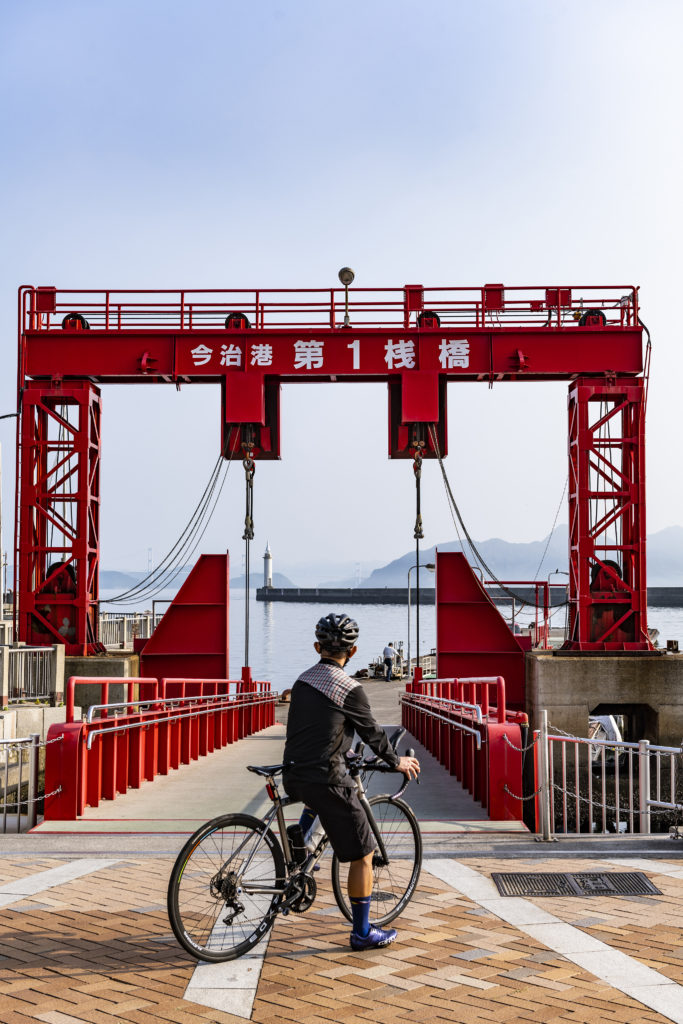
We invited Masashi Hiraiso, owner of the bicycle and car shop Groove, in Matsuyama City, to be our guest. He was our guide to Imabari City, the starting point of the Nishiseto Expressway, aka the Shimanami Kaido. Being a hill climb buff, Mr. Hiraiso suggested that we cross the mountain along National Route 317 instead of taking the route along the coast. Despite the ride being a gentle climb up to the Mizugatoge Tunnel, and the narrow road shoulders in some areas meant we needed to be careful of car traffic, there were highlights along the way like Lake Tamagawako and Nibukawa Onsen. We breathed a sigh of relief as a nostalgic satoyama landscape came into view on the approach to the hot spring resort.
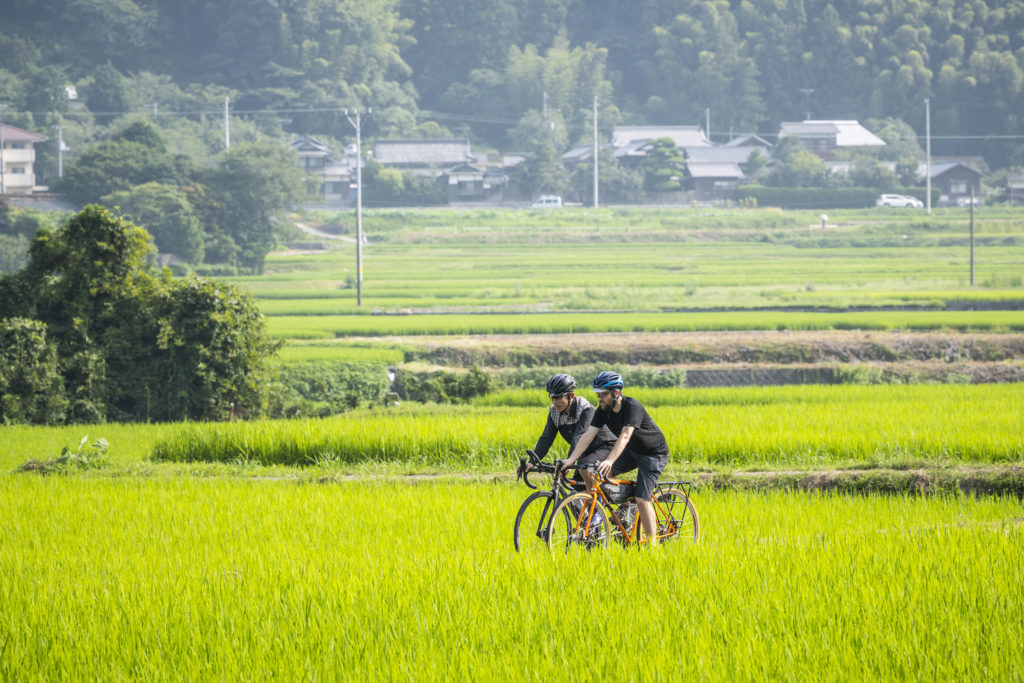
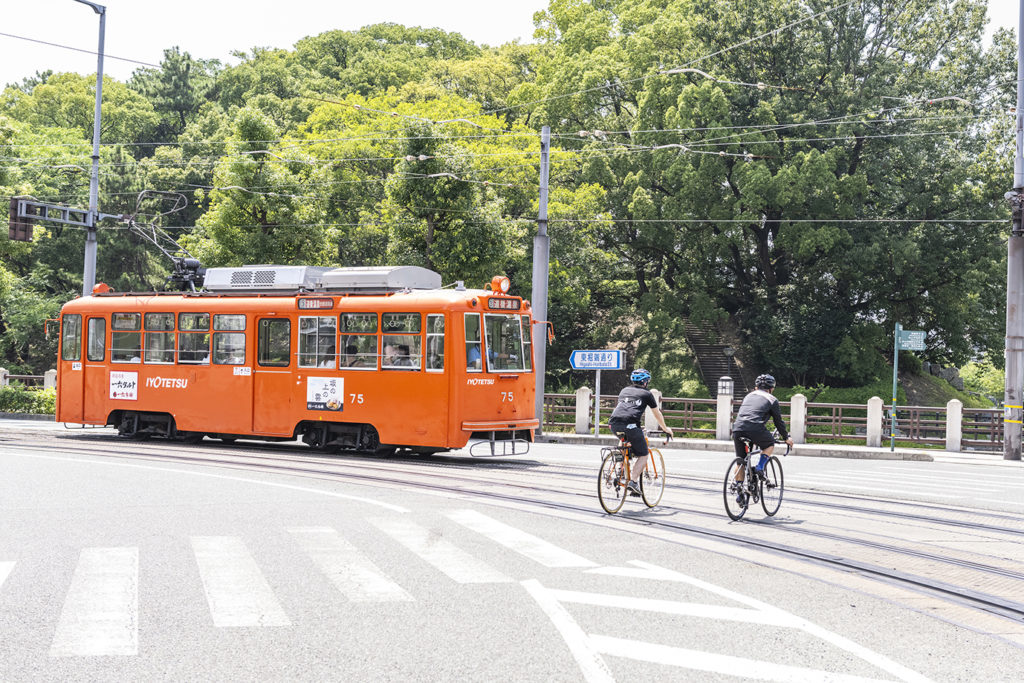
In Imabari, we visited two centers of the local cycling scene. Sunrise Itoyama, the hub of Shimanami Kaido cycle tourism on the Shikoku side, reopened following renovation and provides bicycle rental services including e-bikes. Cyclonoie, the favorite guesthouse of cyclists, is run by Kazunari Utsunomiya, a “pottering” guide who takes visitors “puttering around” on aimless, pleasant rides. Having traveled around the world on a tandem bicycle with his wife and fellow bike aficionado, Tomoko, Mr. Utsunomiya is an icon of the local bicycle culture.
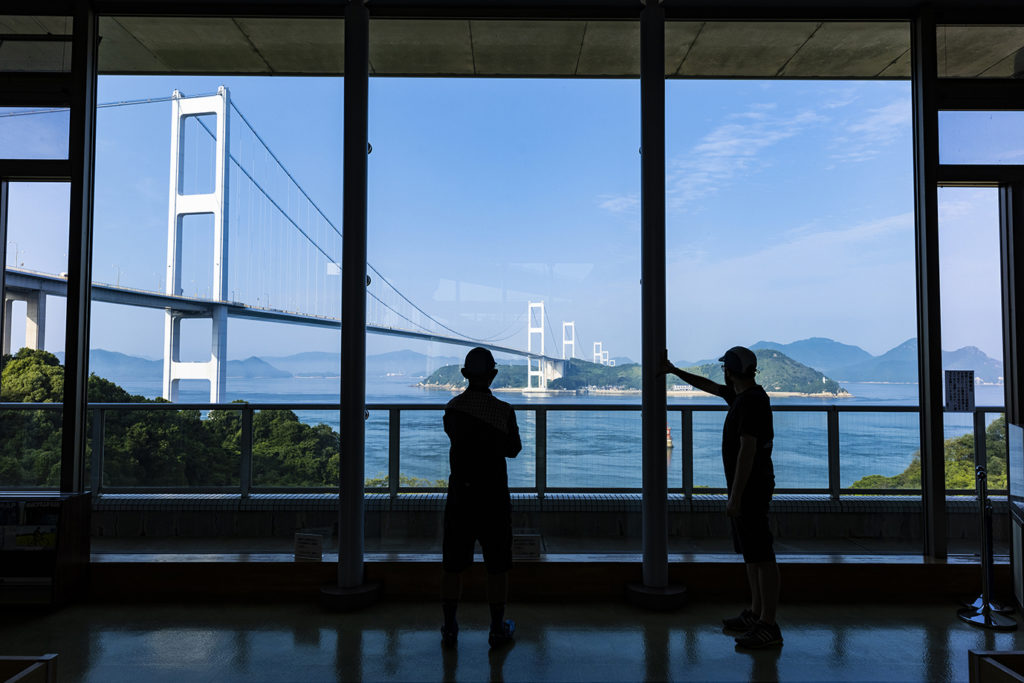
“Cycling across vast continental expanses makes me recognize that each road connects with the next into infinity. And yet the people that pop in and out of view along the road—their language, diet, and character—keep changing like mosaic art. Traveling by bicycle is like connecting the world with a single line. Maybe that’s why I find it fascinating.”
Right now, Mr. Utsunomiya is working to promote cycle tourism and sharing his fascination with bicycle journeys here in the Shimanami Kaido.

Over the bridges reaching up to the heavens
At last, we were ready to depart Imabari and cycle along the Shimanami Kaido. The 70-kilometer-long expressway connects Imabari in Ehime with Onomichi in Hiroshima via seven major bridges. On this trip, we opted to pedal 30 kilometers to Omishima Island and focus on exploring the island highlights. The Kurushima-Kaikyo Bridge, comprising three continuous suspension bridges stretching a total 4.1 kilometers between Imabari and Oshima Island, commanded a picturesque view of the Seto Inland Sea. The waters shimmered a majestic cobalt blue, and the tidal currents of the Kurushima Strait, known as one of the three fastest in Japan, seemed somewhat gentle on this day.
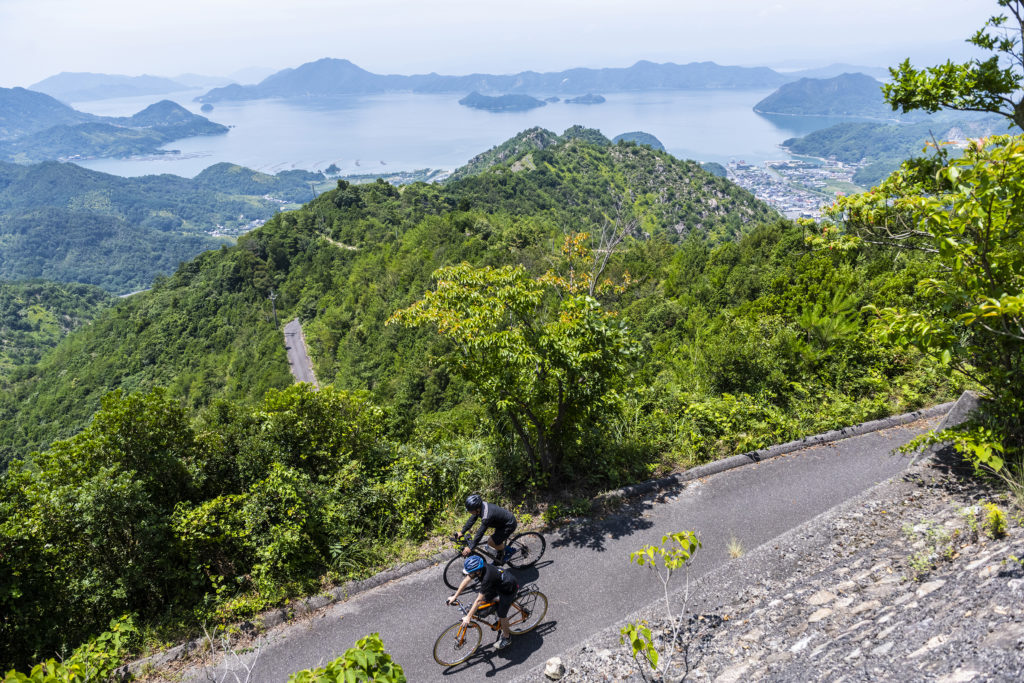
We stopped at the Kirosan Observatory Park on Oshima Island, passed through Hakata Island, and arrived in Omishima Island in about three hours. The largest island of Ehime Prefecture, with a circumference of about 45 kilometers, Omishima Island is the well-known home of Kounji Temple, which worships the Imo-Jizo, and Oyamazumi Shrine, dedicated to the god of the mountain, the sea, and warfare. Also dotted with unique spots like Omishima Brewery, Shimanami Kaido’s first craft beer producer, and Daishin, a restaurant that traps wild boar considered a pest by farmers and serves the game meat, it’s worth spending a full day on Omishima Island.
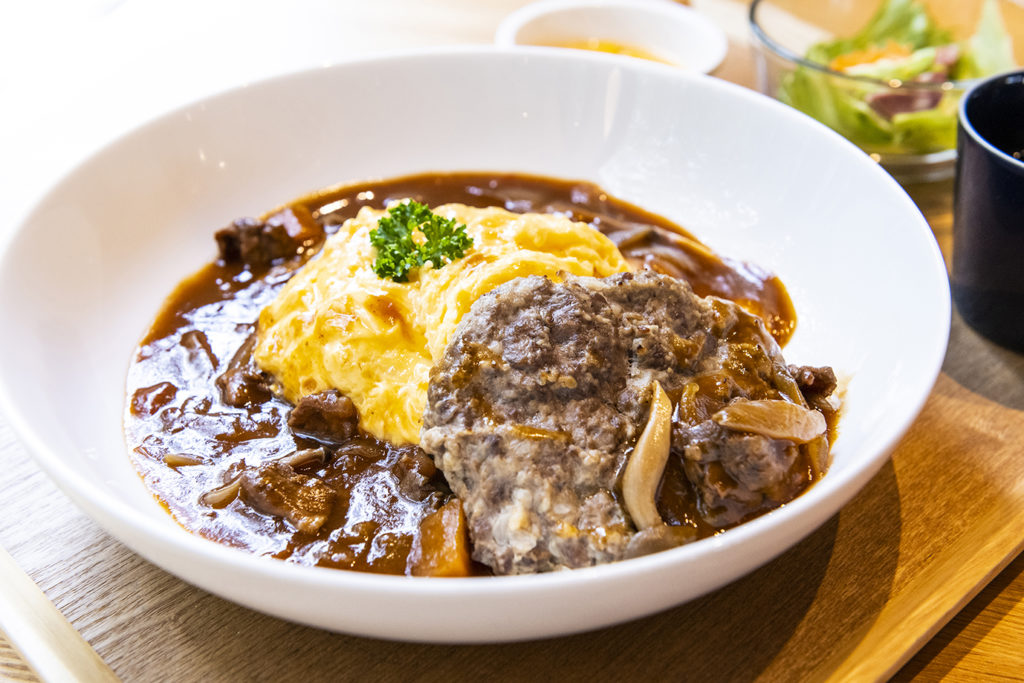
At our destination of Kounji Temple, we met with Toshiaki Asami who chairs the Society for Preservation of Imo-Jizo Historic Sites. He guided us through the temple grounds to the statue of the Imo-Jizo, where we offered a prayer along with our “collaborative” shochu IMO-JIZO.
We spent the night at Wakka, boasting a spectacular view of the Seto Inland Sea and Tatara Bridge. In addition to lodgings, it arranges water taxi services and Seto Inland Sea cruises for cyclists, offers activities like standup paddleboarding tours, and otherwise coordinates nature and leisure experiences on Omishima Island. Here, we settled into a cottage, opened a bottle of IMO-JIZO, french fried sweet potatoes grown by Hiroya Matsuoka, a farmer of the Seto Satsuma-imo Club in Ikata Town, and celebrated our arrival in Omishima Island.
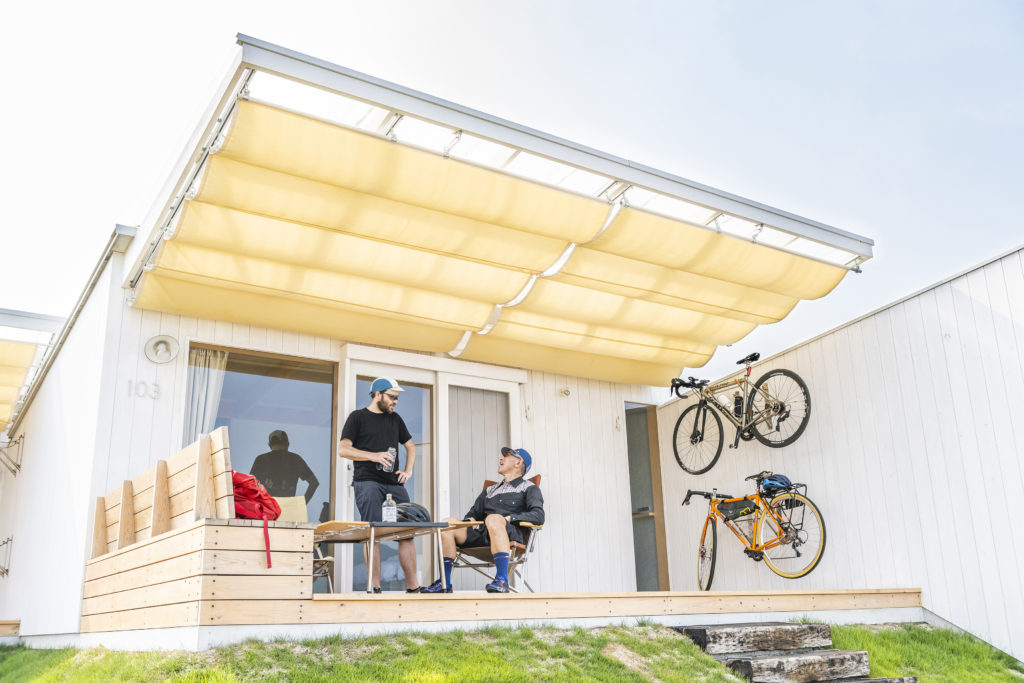
That night, we sat gazing at the waters and Mr. Hiraiso said with a tinge of melancholy, “All of this is impressive, the view of the Seto Inland Sea and the bridges linking the islands. But at the end of the day, it’s those once-in-a-lifetime encounters. The best part of traveling by bike is meeting people.” Mr. Utsunomiya, the guesthouse owner in Imabari. Mr. Matsuoka, the sweet potato farmer, and all the other residents of Omishima Island. Remembering the many encounters we had thanks to IMO-JIZO and this bikepacking trip, we sat there for a long time listening to the music of the gently lapping waves.
